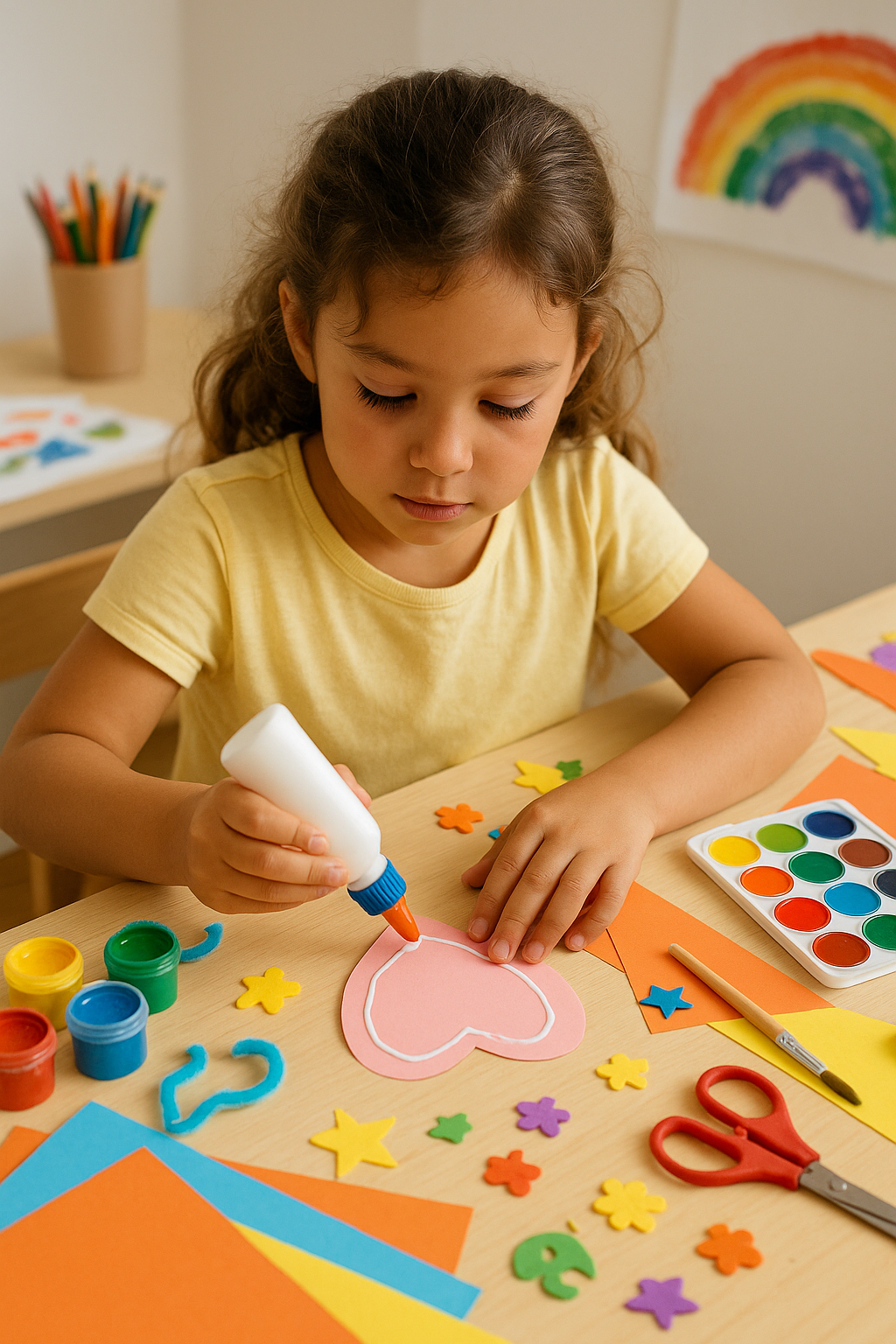Welcome! Check out our latest news.
Read more
As parents and educators, we all want the best for our children. We encourage them to read, solve puzzles, and engage with numbers, believing these activities are the key to their development. However, many of us overlook the powerful benefits that simple arts and crafts can offer. Engaging in creative play—from finger painting to building with craft sticks—significantly contributes to brain growth and enhances various skills. This blog post explores how these playful activities serve as essential tools for nurturing young minds.
In this journey into the world of arts and smarts, we will unveil the surprising impact that creative play has on a child's development. From improving fine motor skills and boosting focus to fostering problem-solving abilities, the skills gained through hands-on art activities extend far beyond the canvas. Let’s delve into how engaging in arts and crafts not only nourishes creativity but also strengthens important cognitive and emotional skills that form a robust foundation for lifelong learning.
How creative play enhances brain development in children
Engaging in creative play allows children to explore their world and express themselves freely. As they manipulate various materials—whether they're shaping clay, drawing, or constructing with blocks—they activate multiple areas of their brain. This multi-sensory experience plays a crucial role in neural development, fostering connections between brain cells that are vital for cognitive growth. By encouraging imaginative thinking and exploration, parents and educators provide a rich foundation for future learning, helping kids develop critical thinking skills that will serve them for a lifetime.
Moreover, creative play not only strengthens fine motor skills but also enhances cognitive abilities such as memory and problem-solving. Children who participate in arts and crafts learn to focus on tasks and follow through from start to finish, cultivating perseverance. When faced with challenges—like figuring out how to fix a broken project—they learn to adapt and develop resilience. This hands-on approach not only nurtures a child's creative spirit but also lays the groundwork for academic achievement, making arts and crafts a vital component of holistic brain development.
The surprising benefits of arts and crafts on learning and focus
Engaging in arts and crafts activities offers a multitude of unexpected benefits that extend beyond mere enjoyment. When children participate in these creative endeavors, they enhance their ability to focus on tasks at hand. Crafting requires sustained attention, whether it’s meticulously coloring within the lines or carefully assembling pieces of a project. As they navigate through different stages of a craft, kids learn to concentrate better and develop the patience necessary to see a project from start to finish. This newfound focus not only improves their artistic skills but also spills over into their academic lives, helping them to stay attentive during lessons and homework.
Moreover, the benefits of arts and crafts on learning are far-reaching. These hands-on activities foster cognitive development as children learn to follow instructions, make decisions, and experiment with different materials. Each time a child approaches an art project, they engage in critical thinking and problem-solving, evaluating what works and what doesn’t. This iterative process mimics scientific exploration, enhancing their academic prowess across various subjects. As a result, creative play not only makes learning enjoyable but also serves as a powerful tool for bolstering concentration and cognitive skills essential for future success.
Fostering creativity and resilience through hands-on art activities
Hands-on art activities serve as a powerful avenue for fostering creativity in children. When kids engage in crafting, they unleash their imaginations and discover that there are endless possibilities for expression. Whether they are sculpting with clay, painting abstract designs, or creating collages, these experiences allow them to explore their thoughts and feelings without the constraints of traditional rules. This freedom encourages them to think outside the box, fueling a sense of innovation that is vital not only in art but in all areas of learning. As they experiment with colors, shapes, and materials, children develop their unique artistic voices and learn to appreciate the diverse perspectives around them.
Moreover, engaging in these creative activities builds resilience in children. When a project doesn’t turn out as expected—perhaps a sculpture collapses or a painting runs—kids learn to problem-solve and adapt their strategies. They discover that mistakes are opportunities for growth rather than failures. This mindset is crucial for developing a healthy approach to challenges in life. By embracing the journey of creating art, children become more confident in their abilities to tackle obstacles, both in their creative endeavors and beyond. Ultimately, hands-on art activities equip youngsters with essential skills that prepare them for future opportunities and challenges they will face as they continue to grow and learn.